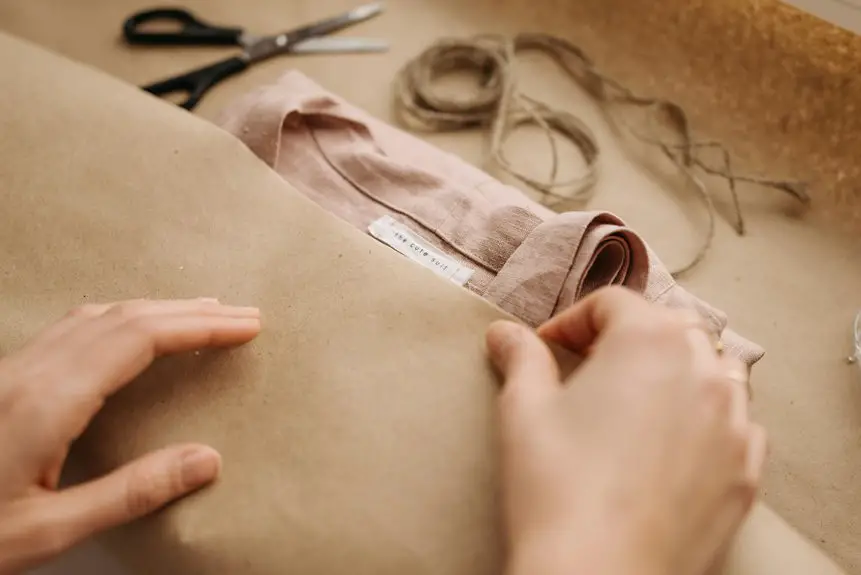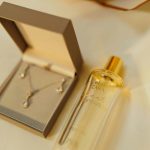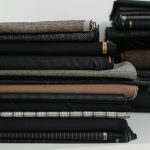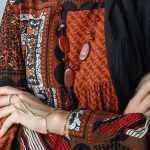Camel hair fabric offers you exceptional warmth and softness thanks to its hollow fibers that trap heat without bulk. It’s lightweight, breathable, and less itchy than wool, making it perfect for sensitive skin. You’ll find it mostly in coats, scarves, and luxury suits, prized for durability and a smooth, elegant look. Caring for it means gentle cleaning and proper storage to maintain its beauty. Keep exploring, and you’ll uncover plenty more about its unique qualities and styling tips.
Table of Contents
Key Takeaways
- Camel hair fabric is lightweight, warm, soft, and naturally breathable due to its hollow fibers that trap heat efficiently without bulk.
- It is durable, wrinkle-resistant, has a smooth texture, and offers excellent moisture-wicking, making it comfortable for sensitive skin.
- Common uses include luxurious outerwear, scarves, high-end suits, and blazers, prized for warmth, softness, and elegant drape.
- Genuine camel hair is identified by its fine, hollow fibers, natural sheen, and colors ranging from light beige to golden brown.
- Care involves dry cleaning or gentle cold washing, flat drying away from sunlight, and storing on padded hangers to maintain fabric quality.
What Is Camel Hair Fabric?
Camel hair fabric comes from the soft undercoat of camels, prized for its warmth and lightweight feel. When you wear it, you’ll notice how it traps heat effectively while remaining breathable, making it perfect for colder climates without feeling bulky.
The fibers are naturally smooth, giving the fabric a soft, luxurious texture that’s gentle on your skin. Unlike synthetic materials, camel hair fabric is durable and resistant to wrinkles, so it keeps its shape even after extended use.
You’ll find it mainly used in coats, scarves, and sweaters, all designed to provide comfort and elegance. Plus, its natural tan color adds a timeless, earthy look that pairs well with many outfits.
How Camel Hair Is Harvested
When you harvest camel hair, timing is key—it’s usually done during seasonal shearing to collect the soft undercoat.
You’ll need to carefully sort the fine hair from the coarse strands to guarantee quality fabric.
Plus, ethical harvesting practices help protect the camels while providing sustainable material for your clothing.
Seasonal Shearing Process
Although the process requires patience and skill, harvesting camel hair is a carefully timed seasonal task that guarantees the quality and softness of the fibers. You’ll find that camels usually shed their winter coats during spring, making this the ideal time for shearing. The process involves gently brushing and combing to collect loose hair, followed by careful shearing to avoid harming the animal.
| Step | Description |
|---|---|
| Timing | Spring, when camels shed naturally |
| Preparation | Brushing to remove loose fibers |
| Shearing | Gentle cutting of the undercoat |
| Collection | Gathering hair for cleaning |
| Post-shearing | Inspecting camel for any injuries |
Sorting Coarse vs. Fine
Once the hair is carefully collected during shearing, the next step involves separating the coarse outer guard hairs from the fine, soft undercoat fibers.
You’ll want to focus on extracting the undercoat because it’s this layer that provides the luxurious softness and insulation camel hair fabric is known for.
The coarser guard hairs are typically longer, thicker, and less pliable, making them unsuitable for fine textiles.
Skilled sorters use manual techniques or specialized combs to carefully remove these guard hairs, ensuring the quality of the final product.
This sorting process is essential, as blending too much coarse hair can compromise the fabric’s softness and durability.
Ethical Harvesting Practices
Because camel hair comes from a living animal, ethical harvesting practices play an essential role in safeguarding the welfare of camels and the quality of the fiber.
You’ll find that responsible harvesters gently comb or shear camels during their natural molting season, avoiding any harm or stress. This method helps collect the soft undercoat without damaging the animal’s skin or coat.
Avoiding harsh techniques safeguards the camel remains healthy and comfortable. When you choose camel hair products, look for brands that prioritize animal welfare and sustainable sourcing.
These practices not only protect the camels but also assure you get softer, higher-quality fibers. By supporting ethical harvesting, you contribute to a more humane and environmentally friendly textile industry.
Unique Properties of Camel Hair Fabric
Camel hair fabric stands out for its remarkable softness and natural insulation, making it a favorite choice for luxurious outerwear.
When you wear camel hair, you’ll notice its exceptional warmth without the bulk, thanks to hollow fibers that trap heat efficiently. It’s also naturally breathable, keeping you comfortable in varying temperatures.
You’ll appreciate its lightweight feel—it’s much lighter than wool yet equally durable. Plus, camel hair offers excellent moisture-wicking properties, so sweat won’t cling to your skin.
Its smooth texture feels gentle against your body, reducing irritation often caused by other coarse fabrics. Additionally, camel hair resists odors and wrinkles, helping you maintain a polished look throughout the day.
These unique properties combine to provide you with a fabric that’s both practical and indulgently comfortable.
Common Uses of Camel Hair in Fashion
You’ll find camel hair fabric mostly in outerwear and coats, thanks to its warmth and softness.
It’s also popular for accessories like scarves, adding a touch of luxury to your outfit.
Plus, designers often use it to craft high-end suits and blazers that stand out.
Outerwear and Coats
When selecting outerwear that combines warmth and elegance, camel hair coats stand out as a timeless choice. You’ll appreciate their natural insulation and luxurious softness, making them perfect for chilly days. These coats often feature classic cuts that never go out of style, ensuring your investment lasts for years. Whether you choose a tailored fit or a relaxed silhouette, camel hair outerwear adds sophistication to any outfit.
| Style | Warmth Level | Occasions |
|---|---|---|
| Classic Overcoat | High | Formal & Business |
| Wrap Coat | Moderate | Casual & Semi-formal |
| Duffle Coat | High | Everyday Wear |
Accessories and Scarves
Few accessories combine style and comfort as effectively as scarves made from camel hair. When you wrap one around your neck, you’ll instantly feel its softness and warmth, perfect for chilly days.
Camel hair scarves are lightweight yet insulating, making them ideal for both casual outings and more polished looks. Their natural beige tones blend effortlessly with various colors, adding understated elegance to your outfit.
Plus, camel hair’s breathable fibers prevent overheating, so you stay comfortable all day. You can easily dress them up or down, pairing with everything from denim jackets to wool coats.
Caring for these scarves is simple too—just gentle hand washing or dry cleaning keeps them looking fresh. Adding a camel hair scarf to your wardrobe elevates your accessory game with timeless appeal.
Luxury Suits and Blazers
Although camel hair is often associated with cozy accessories, it also excels in luxury suits and blazers. When you wear camel hair suits, you enjoy unmatched softness, natural warmth, and a refined look that stands out. Its lightweight yet insulating qualities make it perfect for cooler seasons without feeling bulky. Plus, camel hair’s natural luster adds an elegant touch, ensuring your blazer or suit looks polished for any occasion.
| Feature | Benefit | Why It Matters |
|---|---|---|
| Softness | Comfortable fit | Feels great all day |
| Warmth | Seasonally versatile | Ideal for fall/winter |
| Durability | Long-lasting wear | Investment piece |
| Natural luster | Elegant appearance | Enhances your style |
| Lightweight | Easy to layer | Adapts to your wardrobe |
Benefits of Wearing Camel Hair Clothing
Because camel hair is naturally insulating, you’ll stay warm without feeling weighed down. This fabric traps heat efficiently, making it perfect for chilly days while remaining breathable enough to prevent overheating.
Camel hair keeps you warm and cozy without the bulk, balancing heat retention with breathable comfort.
When you wear camel hair clothing, you’ll appreciate its softness against your skin, which means no itching or discomfort like some wool garments cause. It’s also incredibly durable, so your investment lasts through many seasons.
Camel hair’s natural moisture-wicking properties keep you dry and comfortable, even during light activity. Plus, its elegant drape and subtle sheen elevate your style effortlessly.
Whether you’re dressing up or keeping it casual, camel hair clothing combines comfort, warmth, and timeless sophistication, making it a smart addition to your wardrobe.
Comparing Camel Hair to Other Natural Fibers
When you compare camel hair to other natural fibers like wool, cashmere, and alpaca, you’ll notice distinct differences in texture, warmth, and durability.
Camel hair feels softer than regular wool but is coarser than cashmere, offering a unique balance of comfort and resilience. It’s warmer than alpaca due to its hollow fibers, which provide excellent insulation without added weight.
Unlike wool, camel hair is less itchy, making it ideal if you have sensitive skin. While cashmere is prized for its luxurious softness, camel hair often lasts longer because of its natural strength.
Alpaca, though soft and lightweight, doesn’t match camel hair’s moisture-wicking abilities. Understanding these differences helps you choose the right fabric for your needs, whether you prioritize warmth, softness, or durability.
How to Identify Genuine Camel Hair Fabric
Anyone looking to buy camel hair fabric should know how to spot genuine material.
Authentic camel hair has distinct qualities that set it apart from blends or synthetic imitations. When checking fabric, focus on these key indicators:
- Texture: Genuine camel hair feels incredibly soft and smooth, with a slight natural sheen. It’s warmer and lighter than wool.
- Color: Look for natural camel tones, ranging from light beige to golden brown. Uniform colors may suggest dye or synthetic blends.
- Fiber structure: Inspect closely; real camel hair fibers are fine and slightly hollow, contributing to insulation and softness.
Caring for Camel Hair Garments
Spotting genuine camel hair fabric is only the first step in enjoying its luxurious feel and warmth. To keep your camel hair garments looking their best, handle them with care.
Always check the care label, but generally, dry cleaning is recommended to preserve the fabric’s softness and shape. If you must wash at home, use cold water and a gentle wool detergent, avoiding wringing or twisting.
Lay your garment flat to dry, away from direct heat or sunlight, to prevent shrinking and color fading. Store camel hair pieces in a cool, dry place, ideally folded or hung on padded hangers to maintain their form.
Regularly brush your garment with a soft clothes brush to remove dust and keep fibers smooth.
Styling Tips for Camel Hair Apparel
Because camel hair fabric boasts both warmth and elegance, you can easily elevate your wardrobe with versatile styling choices.
Camel hair’s warmth and elegance bring effortless sophistication to any wardrobe.
To make the most of your camel hair apparel, consider these tips:
- Pair camel coats or sweaters with rich jewel tones like emerald or burgundy to create a striking contrast.
- Combine camel hair pieces with denim for a casual yet refined look that works well for everyday wear.
- Accessorize with leather boots or bags in complementary shades such as tan or deep brown to enhance the fabric’s natural warmth.
These simple strategies help you showcase camel hair’s luxurious texture while keeping your outfit balanced.
Whether you’re dressing up or down, camel hair adapts beautifully to your personal style and the season’s demands.
Frequently Asked Questions
Is Camel Hair Fabric Hypoallergenic?
You’ll find camel hair fabric is generally hypoallergenic because it’s naturally smooth and lacks lanolin, reducing irritation. However, if you have sensitive skin, it’s best to test it first to avoid any allergic reactions.
Can Camel Hair Be Blended With Synthetic Fibers?
Blending camel hair with synthetic fibers is like mixing sunshine with moonlight; you get warmth and durability. You can definitely blend them to create fabrics that are softer, stronger, and more wrinkle-resistant for everyday wear.
What Is the Environmental Impact of Camel Hair Production?
You’ll find camel hair production generally has a lower environmental impact than many fibers since it’s a natural, renewable resource. However, overgrazing and transportation can contribute to environmental concerns, so sustainable practices matter a lot.
How Long Does Camel Hair Fabric Typically Last?
You can expect camel hair fabric to last 10-15 years with proper care. Its natural durability and softness mean it’ll maintain quality, but you should handle it gently, avoid harsh washing, and store it properly to extend its life.
Are There Cultural Significances of Camel Hair in Fashion?
Did you know camel hair garments date back over 3,000 years? You’ll find camel hair holds cultural weight in Middle Eastern fashion, symbolizing luxury and tradition, making your wardrobe both stylish and meaningful.
- A Deep Dive Into Arashi Shibori (Pole-Wrapping) Technique - July 13, 2025
- Resist Dyeing Techniques Beyond Tie-Dye: Batik and Shibori - July 13, 2025
- How to Set Your Tie-Dye so It Doesn’t Fade - July 13, 2025







